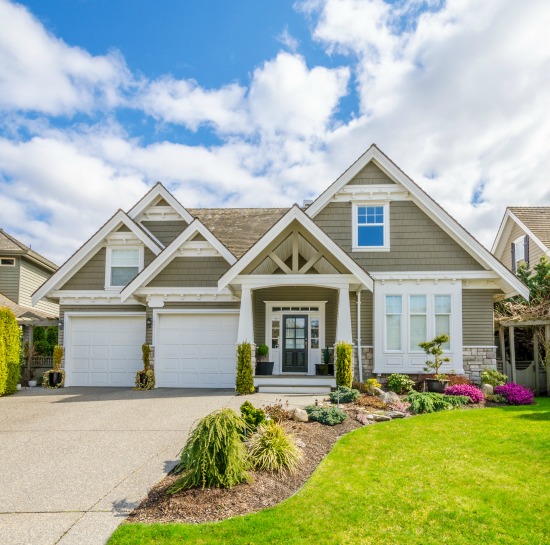Just how often should you paint your house? If you have landed on this blog post, chances are you are thinking about painting. Perhaps you are wondering how long you can go without doing it. Or maybe you need a compelling reason to convince your spouse that it’s time. Regardless of why you landed here, welcome. Let’s explore the question by identifying the signs that your house needs to be painted, the factors that affect how long your paint job lasts, and some ballpark estimates on how often you should expect to paint your house.
Signs your house needs a fresh coat of paint
- The paint is cracking, bubbling or flaking. Heat and moisture are the usual culprits, and left untreated may result in dry or wet rot.
- The paint is faded. If your exterior color is dark, you’ll find that the sun’s UV rays will bleach or change the color faster than lighter shades. Take special note if your paint is fading on a shady side of your house. It may mean you have water damage.
- You are replacing a base layer of your exterior. If you don’t paint the whole house, your stucco or wood will likely have streaks from the paint colors not matching up.
- Your house is new. Home builders often spray one coat of paint over pre-primed wood, which serves more to prevent wood from warping. You should get a better barrier to protect your investment.
Factors affecting your paint’s longevity
- Preparation. For paint to adhere properly, the surface should be clean and dry. Powerwashing is an effective means to clean exteriors, but extra care must be given depending on the material being washed. Note: scrape loose paint and sand surfaces smooth, but don’t use a pressure washer to remove paint as it may damage the base material.
- Outside temperature and moisture. According to Sherwin Williams, “colder temperatures and moisture on the surface will not allow a paint film to form properly. This will shorten the life expectancy of the paint and could cause surfactant leaching, mildew growth, frosting, and adhesion problems.” In general, the ideal temperature range for painting an exterior is between 50°F to 90°F, making summer an ideal time for painting in the midwest.
- The paint itself. The quality of paint as well as the number of coats you use are factors affecting the paint job’s durability. As explained in an online article by Family Handyman Magazine, “high-quality paint has more total solids (pigments plus resins) and fewer solvents than lower-quality paint. So while the two may go on with the same thickness, when the solvents evaporate, a high-quality paint leaves a thicker, tougher paint film.” A couple of coats of better paint will provide better protection.
- The exterior siding/material. When properly done, painted stone, brick and stucco last longer than wood siding. Softwoods such as cedar or pine are more prone to damage than hardwoods that are typically more rot-resistant.
How often should you paint your house?
Provided you have used the right paint and had it professionally applied, here are some ballpark estimates on how often you may need to paint your home.
While we hope you found the answers you needed, let us be the first to give you one you may want. When you want a change is always a good time in our book. 
If you are looking to get an even more specific answer to “how often should you paint your house?”, and you value accurate estimates, clear communication and responsive customer service from a local Indianapolis area painting company, contact ONiT Painting for a free estimate.

If you are looking to get an even more specific answer to “how often should you paint your house?”, and you value accurate estimates, clear communication and responsive customer service from a local Indianapolis area painting company, contact ONiT Painting for a free estimate.



